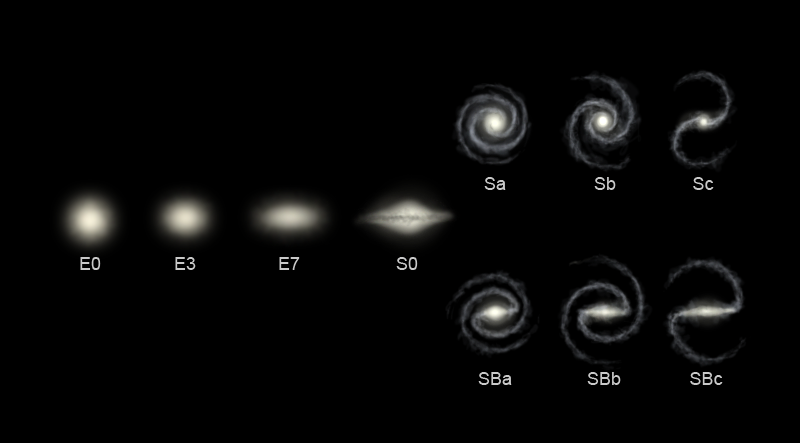Looking at Centaurus A
Along the Electromagnetic Spectrum

There’s an active galaxy out there called Centaurus A. It’s the fifth brightest one out there, and if you look at it in various wavelengths, you find out that it’s fairly buzzing with activity – everything from starbirth to stardeath as well as big jets emanating from a radio-loud core.
We see Centaurus A “edge on” and it seems to be a lenticular or elliptical galaxy with a dust lane. That right there tells astronomers that something’s going on with this thing — most particularly that it merged with a spiral galaxy that was once its companion about 100 million years ago. Mergers do things to galaxies — like warp their shapes and set off waves of star formation.
The core of Centaurus A is bright with thousands and thousands of massive stars, and if you look closely you can see blue regions where starburst activity has been creating batches of bright, massive blue stars.
The galactic heartland has been flaunting its pretty jets at us in x-ray and radio wavelengths for a long time. If you look at Centaurus A in infrared wavelengths (below, right), as the Spitzer Space Telescope did, this thing looks even weirder than it does in the ESO image (above). First,t here’s this warped shape (often referred to as its “morphology”), Plus, there’s this bright spot at the center. That tells us there’s something going on at the heart of this ginormous stellar city.

As astronomers get new instruments that are ever more sensitive to different wavelengths of the electromagnetic spectrum, they turn that equipment toward Centaurus A.
Recently, a group used the Atacama Pathfinder Experiment (APEX) telescope in Chile to look at the heart of Centaurus A in submillimeter wavelengths. What they found is pretty remarkable — details in the jets that have never been seen before, particularly in the submillimeter range.
The new data have been combined with visible and x-ray wavelengths to produce a striking new image (below) that really shows the extent of the jets and lobes emanating out from the center of Centaurus A. That region — which is bright across the spectrum — is home to a supermassive black hole that has about 10 MILLION times the mass of the Sun. (For comparison, the black hole at the heart of the Milky Way Galaxy “only” has around 4 million solar masses.) The jets and lobes emanating from the core of Centaurus A are the “smoking gun” evidence pointing right back toward the black hole!

In the new image, which is a composite of data from three instruments, you can make out a dust ring that circles the entire galaxy. In submillimeter wavelengths, we see not only the heat glow from the central dust disk, but also the emission from the central radio source. What’s really cool about this image is that this is the first time that a pair of inner lobes are seen in submillimeter wavelengths of light.
In the x-ray emission you can trace the jets as they emerge from the center of the galaxy. If you look to the lower right part of the image, you can also see a sort of bluish shock front. This is where the expanding lobe of fast-moving material is colliding with the surrounding gas.
Astronomers measured the emissions from the region of the black hole and calculated that the material in the jets is moving at ab0ut half the speed of light. That implies a LOT of energy being generated by activity around the black hole.
I am goggling at all this because it’s a GALAXY that we’re looking at here and for the first time we can see minute details of the magnetically charged chaos around the central black hole as well as details in the jets and lobes. And we can calculate the speed at which jet material is moving. And, we’re seeing this all from a distance of 13 million light-years!


 There’s a kind of interesting side-note to galaxy studies, and it involves anybody who wants to get online and help astronomers classify galaxies. Surf on over to the
There’s a kind of interesting side-note to galaxy studies, and it involves anybody who wants to get online and help astronomers classify galaxies. Surf on over to the